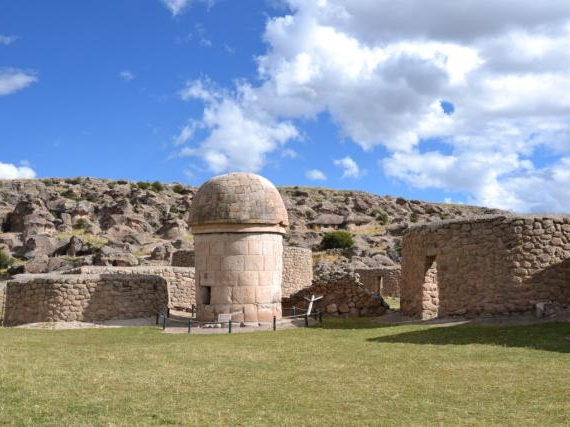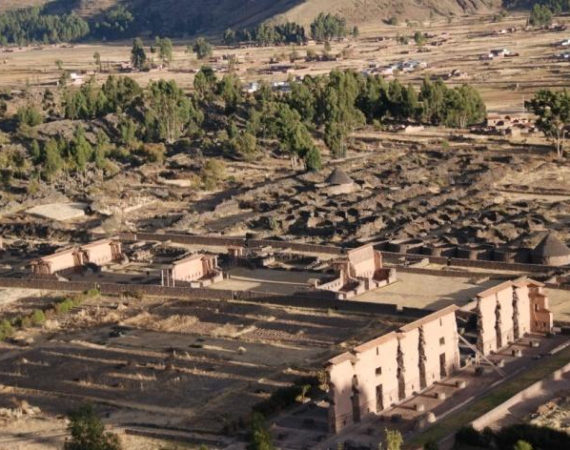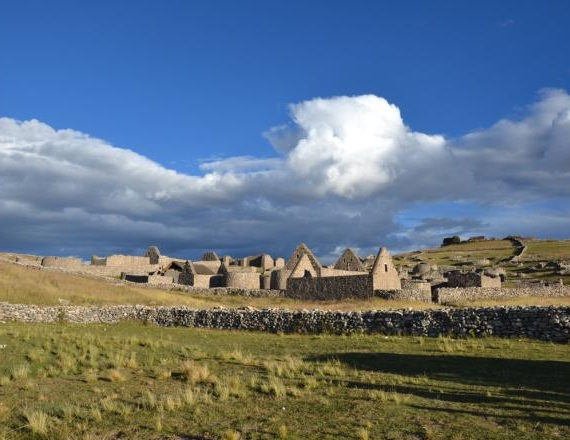Attractions
Archaeological complexes: Kanamarka, Maukallaqta, Raqchi
Communities of Sibayo (Colca), Raqchi (Cusco),
Natural Complexes: Colca Canyon, Faune et Flore Andine
Places
Tour Description
This route is ideal for crossing from Arequipa to Cusco, coming across ancient Andean landscapes, as well as the watershed that flows into the Pacific or the Atlantic. We will discover the fusion between the pre-Inca cultures, Incas and the conquerors of the early times. You will be amazed by the abundant native forest of Queñas on the banks of the origin of the Amazon in Tres Cañones, it is a point where the gorge of three rivers that form the Apurimac River converge. Finally we will visit places as impressive and little frequented as Maukallakta and Kanamarka, we will also visit the community of Raqchi where we will find the temple in honor of WIRACOCHA, maker of everything in Inca times.
Day by Day
Departure to the Three Canyons to the Apurimac Canyon, the deepest, visit the archaeological complex of Kanamarka and Maukallakta. The K’ana nation arose from the influences of the Tiahuanako and Wari empires, later it passed to the Inca domain, then the colonial regime was established with the arrival of the Spanish, who broke the harmony and imperial organization.
Maukallakta: Located on the banks of the Apurimac River, it has circular, semi-circular and rectangular buildings, it had 4 occupations:
K’ana Nation (pre-Inca)
Tiwanaku culture
Inca
Spanish
It was a tambo for food such as charki, chuño, cañihua,… There is a Chullpa that resembles a bug that served as a royal tomb. The road or Qapaqñan that comes from Cusco and Raqchi passes through the middle of the citadel.
«mauka llakta» does not correspond to the one that the complex had in the Incas, since it means old town, usual terms in the peasantry of our time to indicate archaeological groups.
Typical lunch surrounded by impressive landscapes.
Kanamarka: Citadel of the K’ana nation, with later Inca occupation due to the presence of walls, trapezoidal doors with green diorite stones that come from Cusco. The enclosures are well distributed and receive water through perfectly built channels, their houses are circular and rectangular. It was the political, religious and administrative capital of the K’ana nation. As a religious capital, it was a ceremonial center (Huaca). It has a royal burial chamber, as well as some chambers that were not valued.
The history of the K’ana nation has not yet been written, as it still holds enigmatic mysteries.
Arrival at the Raqchi Community.
We will visit the archaeological complex of the Temple of Wiracocha, with its enormous Colcas – Inca Deposits – its ceremonial sources and the neighborhood of the Priests. Complex built in the fifteenth century by the Inca Pachacuteq, fulfilled a strategic role in the Inca pilgrimages and the conquest of the highlands. It was built in honor of Wiracocha whose power would have manifested itself through the eruption of the Khimsashata volcano.
Then, we will have the opportunity to visit a pottery workshop in which we will be able to observe Andean techniques of making pottery; While each one of us will be able to try the elaboration of their own pottery, we will be able to talk with the people of Raqchi about their culture and customs.
General Information
- Private transport.
- Tour guide.
- Entrance fees to archaeological sites.
- Lunch.
- Food not mentioned.
- Extra drinks.
- Tip support staff.
- Others not mentioned.
- Video and/or photographic camera.
- Light clothes for the day, comfortable shoes, rain poncho, warm clothes for the night.
- Small backpack for personal effects, plastic bags to keep effects dry, water bottles.
- Passport.
- Extra money, especially for those who wish to purchase ceramics.
- Water bottles, sunscreen (the sun is stronger at altitude), personal belongings and personal medicines.
Gallery



Recommended Tours
Private Tours.
